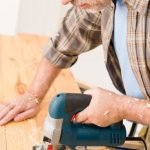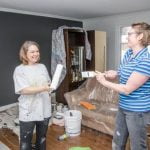Do you know how to improve indoor air quality in your NY home? The quality of the air we breathe inside our homes is crucial for our health and well-being. In this article, we will discuss the importance of indoor air quality in New York homes and the potential health risks associated with poor air quality.
We’ll also provide practical tips for reducing indoor air pollutants, and address specific concerns such as high humidity and mold growth. Additionally, we’ll explore the benefits of indoor plants for natural air purification, and emphasize the importance of seeking professional assessment and testing for indoor air quality. By implementing these strategies, you can create a healthier environment for yourself and your family.
Indoor air quality is a significant concern for New York homeowners, as it can have a direct impact on respiratory health and overall well-being. Common indoor air pollutants found in NY homes may stem from various sources such as cooking fumes, cleaning products, pet dander, tobacco smoke, and volatile organic compounds (VOCs) from household materials. These pollutants can contribute to respiratory issues, allergies, and other health problems when not properly addressed.
Improving indoor air quality is essential for creating a healthy living environment. From utilizing efficient ventilation systems to investing in air filters and purifiers, there are several strategies that homeowners can employ to reduce indoor air pollutants effectively. Proper cleaning routines and maintenance practices play a crucial role in minimizing airborne particles and allergens within the home as well. By adopting these proactive measures, residents can take significant steps towards ensuring cleaner and healthier indoor air in their NY homes.
Common Indoor Air Pollutants in NY Homes
New York homes, like many urban and suburban areas, can be susceptible to a variety of indoor air pollutants that can have adverse effects on health. These pollutants can come from sources such as poor ventilation, household products, and environmental factors specific to the region. Understanding the common indoor air pollutants found in New York homes is essential for taking proactive steps to improve indoor air quality and safeguard the well-being of residents.
Some typical indoor air pollutants found in New York homes include:
These pollutants can contribute to respiratory issues, allergies, and other health concerns when present at elevated levels. It is crucial for homeowners in New York to be mindful of these potential contaminants and take proactive measures to mitigate their impact on indoor air quality.
To improve indoor air quality in your New York home, consider the following tips:
1. Use high-quality air filters: Invest in HEPA filters for HVAC systems and regularly replace them as recommended by the manufacturer.
2. Control moisture levels: Use dehumidifiers to maintain ideal humidity levels (between 30-50%) and prevent mold growth.
3. Implement proper ventilation: Open windows when weather permits and use exhaust fans in kitchens and bathrooms to promote air circulation.
By addressing these common indoor air pollutants proactively, homeowners can create healthier living environments for themselves and their families. Regular maintenance and conscientious habits play a vital role in sustaining clean indoor air throughout the year.
Tips for Improving Indoor Air Quality
Improving indoor air quality in your NY home is crucial for maintaining a healthy and comfortable living environment. With the presence of various indoor air pollutants, it’s essential to implement practical steps to minimize exposure and promote cleaner air inside your home. Here are some tips for improving indoor air quality:
- Keep your home clean: Regular cleaning routines can help reduce the accumulation of dust, pet dander, and other allergens. Vacuuming carpets and upholstery, dusting surfaces, and washing bedding can contribute to better indoor air quality.
- Proper ventilation: Ensure adequate ventilation in your home by opening windows and using exhaust fans in areas prone to moisture and odors such as the kitchen and bathroom. This helps to circulate fresh outdoor air while expelling indoor pollutants.
- Control humidity levels: High humidity can lead to mold growth and worsen indoor air quality. Use dehumidifiers to maintain optimal humidity levels (around 30-50%) and address any water leaks promptly to prevent mold formation.
In addition to these tips, consider investing in high-quality air filters or purifiers for your home. These filtration systems can effectively remove airborne particles, allergens, and even certain volatile organic compounds (VOCs) from the indoor air. Look for HEPA filters or activated carbon filters that are suitable for New York home settings.
By implementing these practical strategies, you can create a healthier indoor environment for yourself and your family. Prioritizing good indoor air quality is an essential aspect of maintaining overall well-being within the confines of your NY home.
Importance of Air Filters and Purifiers
Air filters and purifiers play a crucial role in maintaining clean indoor air quality in New York homes. With the presence of common indoor air pollutants such as dust, pollen, pet dander, and mold spores, it is essential to have effective filtration systems in place. These pollutants can exacerbate respiratory conditions and allergies, making it necessary to understand how to improve indoor air quality in your NY home using air filters and purifiers.
One of the key benefits of air filters and purifiers is their ability to capture and remove airborne particles that can contribute to poor indoor air quality. High-efficiency particulate air (HEPA) filters are especially effective at trapping small particles, making them a popular choice for improving indoor air quality. Additionally, some air purifiers are equipped with advanced technology such as UV-C light or ionization to further eliminate bacteria, viruses, and volatile organic compounds (VOCs) from the air.
When selecting an air filtration system for your New York home, consider factors such as filter efficiency, room size coverage, noise level, and energy consumption. It’s important to choose a system that aligns with your specific indoor air quality needs and preferences. Regular maintenance of these systems is also crucial to ensure optimal performance in reducing indoor air pollutants.
In addition to traditional standalone air purifiers, whole-house filtration systems can be installed within HVAC systems to provide comprehensive air purification throughout the home. By incorporating these innovative solutions into your home environment, you can significantly improve the overall indoor air quality for better health and well-being.
Cleaning and Maintenance Practices
Maintaining a clean and well-maintained living environment is essential for improving indoor air quality in your NY home. Regular cleaning routines can significantly reduce the presence of indoor air pollutants, allergens, and contaminants.
Dusting surfaces, vacuuming carpets and upholstery, and mopping floors are effective ways to minimize the accumulation of particles that can negatively impact air quality. Additionally, keeping your HVAC system and air ducts clean through professional maintenance services can ensure that your indoor air remains clean and healthy.
In addition to regular cleaning, proper maintenance of household appliances and systems is crucial for indoor air quality improvement. Inspecting and changing air filters according to manufacturer’s recommendations is important for preventing the circulation of airborne particles and allergens. Furthermore, addressing any leaks or water damage promptly can help prevent mold growth, which can drastically affect indoor air quality.
According to the Environmental Protection Agency (EPA), indoor pollutant levels can be 2-5 times higher than outdoor levels due to insufficient cleaning practices in homes. By incorporating consistent cleaning and maintenance habits into your routine, you can effectively mitigate the impact of common indoor pollutants on your health and well-being.
| Indoor Air Quality Improvement Method | Benefit |
|---|---|
| Regular dusting, vacuuming, and mopping | Reduces accumulation of particles and allergens |
| Professional HVAC system maintenance | Ensures clean circulation of indoor air |
| Promptly addressing leaks and water damage | Prevents mold growth and moisture-related issues |
Addressing High Humidity and Mold Growth
High humidity and mold growth can significantly impact the indoor air quality of homes in New York. Excessive moisture levels can create an environment conducive to mold formation, which can release spores and mycotoxins into the air, posing health risks to occupants. Addressing high humidity and preventing mold growth is essential for improving indoor air quality in your NY home.
One way to combat high humidity is by using dehumidifiers, especially in areas prone to moisture accumulation such as basements and bathrooms. Dehumidifiers help to regulate humidity levels and reduce the risk of mold growth. Additionally, proper ventilation through exhaust fans in bathrooms and kitchens can also mitigate moisture build-up, ultimately contributing to better indoor air quality.
Regular inspection for any signs of water leaks or condensation is crucial in preventing mold growth. Promptly addressing any sources of moisture intrusion or dampness can prevent the proliferation of mold within a home environment. Ensuring that plumbing systems are free from leaks and maintaining adequate waterproofing in spaces susceptible to water seepage are vital steps in controlling indoor humidity levels.
It’s important to note that mold thrives in humid, dark, and stagnant environments. Therefore, promoting airflow and natural light within the home can inhibit the growth of mold. Properly ventilating attics and crawl spaces can also help prevent excessive moisture accumulation. By taking these proactive measures, homeowners in New York can effectively address high humidity and minimize the risk of mold, thus enhancing the overall indoor air quality of their living spaces.
| High Humidity Control | Mold Prevention |
|---|---|
| Use dehumidifiers | Regular inspection for signs of water leaks |
| Ensure proper ventilation | Promote airflow and natural light |
| Address sources of moisture intrusion promptly | Properly ventilate attics and crawl spaces |
Benefits of Indoor Plants
Indoor plants not only beautify the interior of a home but also play a crucial role in improving indoor air quality. Incorporating indoor plants can be an effective and natural way to reduce common indoor air pollutants and promote a healthier living environment. In New York homes where outdoor air pollution can seep inside, utilizing indoor plants for air purification becomes even more essential.
Air Purification Benefits
Certain houseplants have the ability to remove harmful toxins from the air through a process called phytoremediation. These plants can effectively filter out pollutants such as formaldehyde, benzene, and trichloroethylene, which are commonly found in household items like carpets, furniture, and cleaning products. By absorbing these toxins through their leaves and roots, indoor plants act as natural air purifiers, contributing to improved indoor air quality.
Suitable Indoor Plants
When choosing indoor plants for air purification in New York homes, it is important to consider low-maintenance varieties that thrive indoors. Some popular options include spider plants, peace lilies, snake plants, and pothos. These plants are known for their resilience in indoor environments and their effectiveness in removing airborne contaminants. Additionally, incorporating a variety of plant species can enhance the overall air purification capabilities within the home.
Care and Maintenance
To maximize the air-purifying benefits of indoor plants, proper care and maintenance are essential. This includes providing adequate sunlight exposure, regular watering (without over-watering), and occasional pruning to maintain healthy growth. Furthermore, keeping the plant’s foliage clean by gently wiping away dust and debris helps optimize their ability to purify the surrounding air.
By strategically placing low-maintenance indoor plants throughout different rooms in a New York home, residents can experience cleaner and fresher indoor air while adding aesthetic appeal to their living spaces. With these natural air purifiers complementing other efforts to improve indoor air quality, homeowners can create a healthier environment for themselves and their families.
Professional Indoor Air Quality Assessment
Seeking professional indoor air quality assessment is a crucial step in ensuring the health and well-being of residents in New York homes. Professional assessments involve comprehensive testing and analysis to identify potential sources of indoor air pollution and provide tailored solutions for improvement. By enlisting the expertise of certified professionals, homeowners can gain valuable insights into their indoor air quality and take targeted measures to address any issues.
The Importance of Expert Evaluation
Professional indoor air quality assessment involves the use of specialized equipment and techniques to accurately measure pollutant levels within a home. This level of precision allows for a thorough understanding of the specific pollutants present, their concentrations, and potential sources. With this information, homeowners can make informed decisions on how to improve indoor air quality in their New York residence.
Additionally, professional assessments can uncover hidden issues such as mold growth, improper ventilation, or ineffective air filtration systems that may be contributing to poor indoor air quality. Identifying these underlying causes is essential for implementing effective solutions that target the root of the problem.
Finding Certified Professionals in New York
In New York, homeowners have access to a range of certified professionals specializing in indoor air quality evaluations. When seeking an expert assessment, it is important to look for professionals with relevant certifications and experience in conducting thorough evaluations. Organizations such as the American Indoor Air Quality Council (IAQC) offer certifications for professionals who have demonstrated proficiency in assessing and improving indoor air quality.
By selecting qualified professionals with industry-recognized certifications, homeowners can ensure that they are receiving accurate assessments and reliable recommendations for enhancing their indoor air quality. Investing in a professional evaluation is an important proactive step towards creating a healthier living environment for you and your family in your New York home.
Conclusion
In conclusion, ensuring good indoor air quality in New York homes is essential for maintaining the health and well-being of occupants. By following the practical tips and guidelines provided in this article, residents can take proactive steps to reduce indoor air pollutants and create a cleaner living environment. Proper ventilation, regular cleaning and maintenance practices, as well as the use of air filters and purifiers, play a crucial role in improving indoor air quality.
Addressing high humidity levels and preventing mold growth is also crucial for maintaining healthy indoor air. By implementing solutions to control humidity and incorporating low-maintenance indoor plants for natural air purification, residents can effectively mitigate the impact of these common indoor air quality issues in their homes.
Furthermore, seeking professional assessment and testing for indoor air quality can provide homeowners with valuable insights and recommendations for improvement. By engaging certified professionals in New York for thorough evaluations, residents can gain a better understanding of their indoor air quality status and make informed decisions on effective measures for improvement.
Overall, prioritizing good indoor air quality is a key aspect of creating a healthy living space in New York homes. By implementing these strategies, residents can significantly improve their indoor air quality and enjoy better overall health.
Frequently Asked Questions
What Are 3 Strategies to Improve Indoor Air Quality?
One strategy to improve indoor air quality is to regularly clean and vacuum the house to reduce dust and allergens. Another strategy is to use air purifiers with HEPA filters to remove pollutants from the air. Lastly, increasing ventilation by opening windows and using exhaust fans can help freshen the indoor air.
How Do I Fix Bad Air Quality in My House?
To fix bad air quality in your house, you can start by identifying potential sources of pollution such as mold, pet dander, or chemical products. Then, take steps to eliminate or reduce these sources, such as fixing leaks, using non-toxic cleaning products, and grooming pets regularly.
Additionally, improving ventilation and investing in an air purifier can help improve air quality.
How Do You Optimize Indoor Air Quality?
Optimizing indoor air quality involves a combination of strategies such as maintaining a clean living environment, controlling moisture levels to prevent mold growth, and reducing the use of products that release harmful chemicals into the air. Monitoring indoor humidity levels, regularly changing HVAC filters, and promoting good ventilation are also key factors in optimizing indoor air quality.

I’m thrilled to have you here as a part of the Remodeling Top community. This is where my journey as an architect and remodeling enthusiast intersects with your passion for transforming houses into dream homes.





